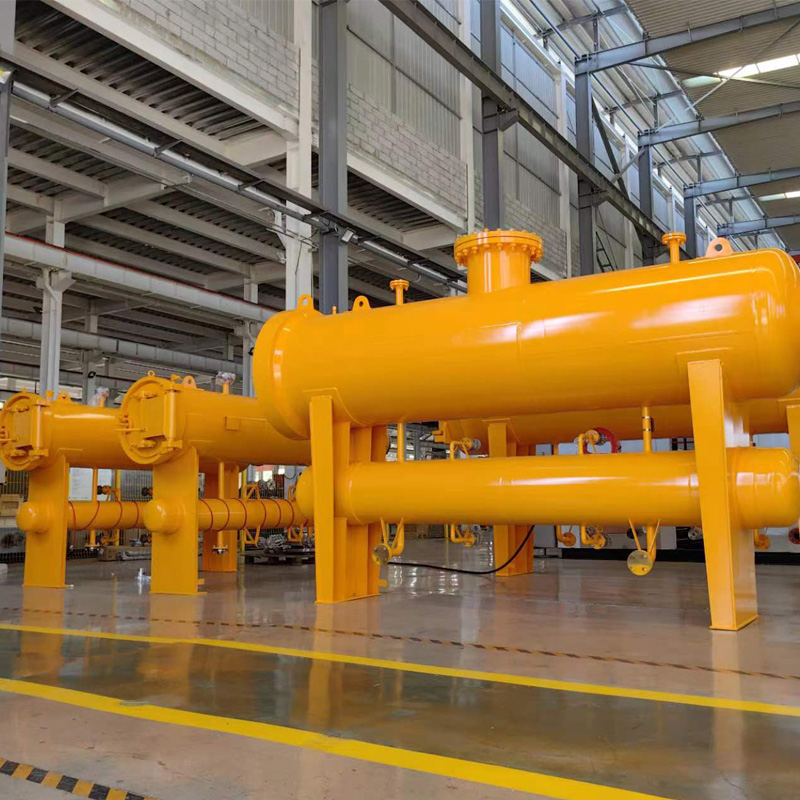
Dec . 15, 2024 21:20
Back to list
Natural Gas Pressure Reduction Station Overview and Operational Insights
Natural Gas Pressure Reduction Stations Vital Components of Gas Distribution Systems
Natural gas is increasingly becoming a preferred energy source worldwide due to its efficiency and environmental benefits. However, transporting natural gas requires meticulous handling, particularly regarding pressure management. One crucial component of the natural gas distribution network is the Natural Gas Pressure Reduction Station (PRMS). This facility plays a vital role in ensuring that gas reaches consumers safely and effectively while maintaining the necessary pressure levels throughout the distribution process.
Understanding Natural Gas Pressure Reduction Stations
A Natural Gas Pressure Reduction Station is designed to reduce the high pressure of natural gas transported through pipelines to a lower, controlled level suitable for safe distribution to homes and industries. The gas enters the PRMS at high pressure from the transmission pipeline, which can exceed 1,000 psi (pounds per square inch). Before entering the consumption lines, the gas must be depressurized to meet local standards, typically between 5 to 60 psi, depending on the application and regulatory requirements.
Components of a Pressure Reduction Station
A PRMS consists of several key components that work together to ensure safety and efficiency
1. Pressure Regulators These devices are the heart of the station. They automatically adjust the gas pressure to the desired level. By using a diaphragm-controlled spring mechanism, pressure regulators maintain a steady output pressure irrespective of fluctuations in the input pressure.
.
3. Filtration Systems Before the gas is used, it must be clean. Filtration units are integrated into the station to remove impurities and particulates that could clog and damage downstream equipment or reduce efficiency.
محطة تخفيض ضغط الغاز الطبيعي

4. Flow Meters These devices measure the quantity of gas passing through the system. Accurate flow measurements are crucial for monitoring consumption and ensuring accurate billing for end-users.
5. Control Systems Modern PRMS are equipped with sophisticated control systems that allow operators to remotely monitor and manage the gas pressure, ensuring optimal performance and safety.
The Importance of PRMS in Energy Distribution
The role of Natural Gas Pressure Reduction Stations cannot be overstated. They are essential for maintaining the stability and reliability of the gas supply. By ensuring proper pressure levels, PRMS help prevent accidents related to overpressure, which can lead to gas leaks or explosions, posing significant risks to public safety and the environment.
Additionally, PRMS facilitates the efficient utilization of natural gas, making it available to a diverse range of users, from residential customers to large industrial plants. The controlled delivery ensures that businesses can operate smoothly without interruption due to gas supply issues, thus supporting economic growth and energy security.
Environmental Considerations
As the world shifts towards cleaner energy sources, the operation of PRMS has also evolved to become more environmentally friendly. Innovations in technology have led to the development of low-emission pressure regulators and improved monitoring systems that help reduce methane leaks—a potent greenhouse gas. These advancements not only enhance safety but also align with global efforts to mitigate climate change.
Conclusion
Natural Gas Pressure Reduction Stations are indispensable in the pipeline infrastructure that supports the global energy landscape. By effectively managing the pressure of natural gas, these stations ensure safety, reliability, and efficiency in its distribution. As we continue to rely on natural gas as a key energy source, investing in PRMS technology will be crucial for sustainable energy practices and the advancement of cleaner energy systems. The ongoing development and implementation of more efficient and environmentally friendly pressure reduction technologies will undoubtedly play a vital role in shaping the future of energy distribution.
Next:
Latest news
-
Safety Valve Spring-Loaded Design Overpressure ProtectionNewsJul.25,2025
-
Precision Voltage Regulator AC5 Accuracy Grade PerformanceNewsJul.25,2025
-
Natural Gas Pressure Regulating Skid Industrial Pipeline ApplicationsNewsJul.25,2025
-
Natural Gas Filter Stainless Steel Mesh Element DesignNewsJul.25,2025
-
Gas Pressure Regulator Valve Direct-Acting Spring-Loaded DesignNewsJul.25,2025
-
Decompression Equipment Multi-Stage Heat Exchange System DesignNewsJul.25,2025

